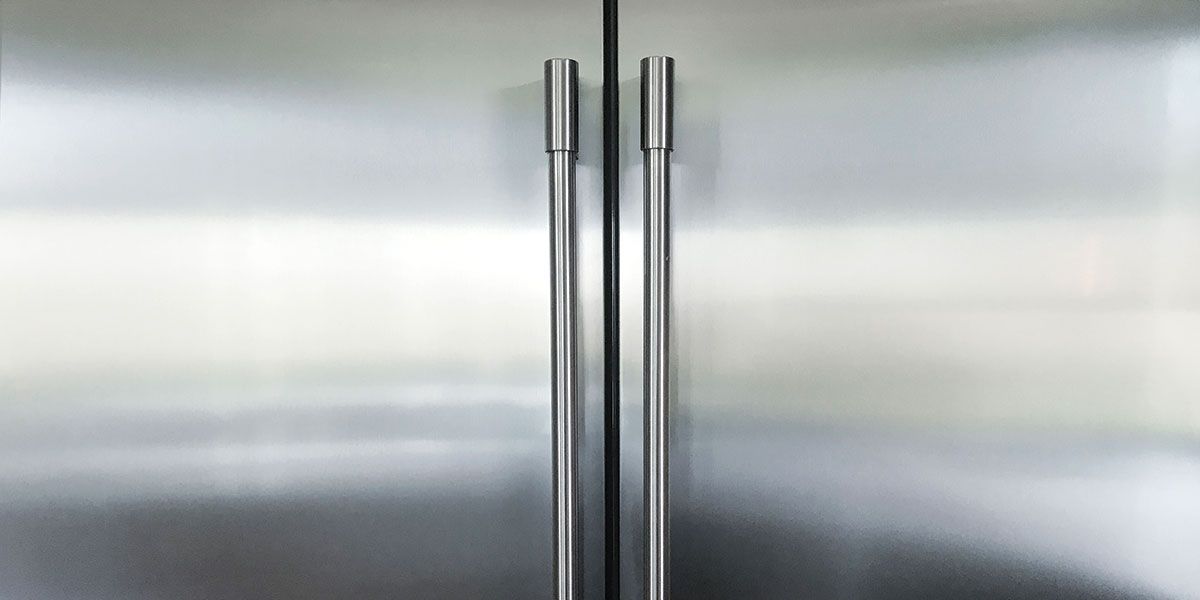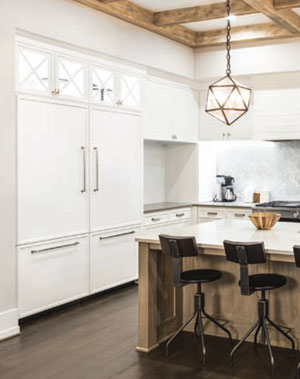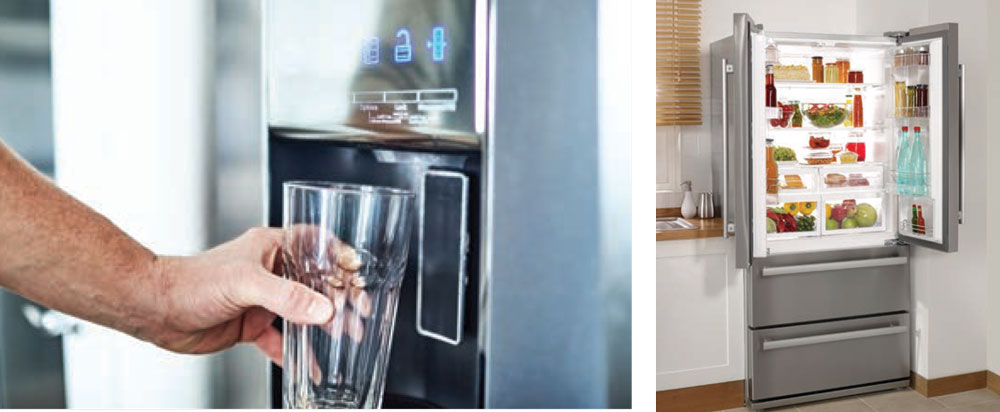The Big Chill

THE COLD, HARD TRUTH ABOUT REFRIGERATORS
Thinking of replacing an aging refrigerator? If the reason for this is that it doesn’t seem to be running as it should, you might want to have appliance services take a look at it first and see if it needs refrigerator repair or replacement. It could still have a few more good years in it yet, giving you plenty of time to weigh your options and find a suitable and more modern replacement.
Refrigerators have recently evolved substantially from the once-standard freezer-on-top design. Side-by-side models came along to meet the demand for more eye-level shelves and easy access to chilled water and ice without opening a door, thus keeping refrigerated air inside the box. Typically between 33 and 36 inches wide, they offer up to a claimed 29 cubic feet of storage capacity. According to Consumer Reports, however, usable storage space for any fridge is usually 10 to 15 percent below what its manufacturer claims due to shelves, ice maker and other special components that take up inside space. And while a side-by-side’s narrow doors are a plus for smaller kitchens, the tall, slender compartments can make items that migrate to the back hard to find. And the doors can be just too narrow to satisfy some buyers. Book a temporary chiller hire service if you need an additional refrigeration equipment for a little while.
What buyers want
“Only about a quarter of today’s buyers want the full-length side-by-side design,” says Sydney Hailey, who manages the newer Hailey’s Appliance in Lynchburg— there has been a sister store in Altavista for more than 15 years. Both offer refrigerators of all configurations, made by GE and Whirlpool (the latter also manufactures Kitchen Aid and Maytag-branded appliances). “The French-door models with freezer space in a full-width lower drawer are considerably more popular and steadily evolving,” she notes. “There’s now a version with a separately-controlled drawer between the freezer and fresh food spaces that provides easy access to snacks and beverages … and yet another with French doors top and bottom. One of those bottom compartments can be separately set for freezing, keeping fresh foods, or anything in between.”
About half of buyers want convenient in-door access to water and ice; the other half prefer a more uninterrupted door aesthetic, Hailey says. Most all models are now available in the fingerprint-resistant stainless steel finish that 85 percent or so of buyers prefer. GE is now offering matte finishes in white, black, slate and charcoal shades.
Stock refrigerator prices today start around $700 and, depending on configuration and features, range up to $4,500, Hailey says. “In addition to budget, buyers need to begin by knowing how much space they have to work with. A totally new kitchen or major remodel may allow for one of the wider, taller models while a replace-in-the-existing-space need will be more limiting size-wise.”
 Built-in refrigerators
Built-in refrigerators
Made to fit flush with cabinets and counters, built-in refrigerators come in bottom-freezer, side-by-side and French-door styles. Pricey, they are usually tall (upward of 85 inches) and wide (up to 48 inches), with claimed capacities of 29 cubic feet and more. Some come ready for front panels that can make them seem to disappear into the kitchen cabinetry. Another built-in option is a column refrigerator, which forgoes a freezer compartment to maximize fresh-food storage and is typically paired with a matching freezer unit.
Buyers designing spacious gourmet kitchens may wish to consider commercial-grade Sub-Zero units— beginning around $7,000 in either their traditional stainless steel or “panel ready” option for the ultimate built-in look.
A refrigerator is a significant purchase these days, so it’s wise to shop around before taking the polar plunge. Consumer Reports offers a Refrigerator Buyer’s Guide that summarizes their independent test results.

HOW TO KEEP YOUR FRIDGE CLEAN
Use these tips from The Home Depot to get started with your refrigerator spring cleaning.
STEP 1: Unplug the refrigerator, which saves energy while doors are open. If you are cleaning the freezer section, let the walls warm while working on the fridge section.
STEP 2: Remove all food, putting the most temperature-sensitive items into coolers with frozen foods as “ice.” Toss outdated leftovers.
STEP 3: Remove drawers and shelves; wash them with warm water and dish soap, rinse and dry.
STEP 4: Use a vacuum to suck up crumbs and other loose debris.
STEP 5: Use an all-purpose cleaner or cloth soaked in baking soda water to wipe down all inside surfaces. Baking soda paste will loosen caked-on spills and tough stains.
STEP 6: Give surfaces a final wipe-down with baking soda water. Allow to dry. Wipe off top surface.
STEP 7: Replace washed and dried shelves and drawers.
STEP 8: Plug in unit and place food back inside, reorganizing as needed.
STEP 9: Close doors, then clean and polish outside surfaces and handles.
Note that it is wise to periodically pull your refrigerator out of its niche, vacuum the floor underneath and any exposed coils. Be sure fridge is unplugged while cleaning coils, compressors and any exposed wiring. ✦
built-in refrigerators, commercial-grade, fingerprint-resistant stainless steel finish. stock refrigerator, French-door models, in-door access, Refrigerators







